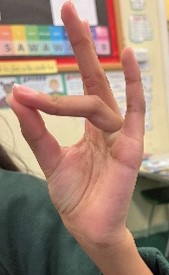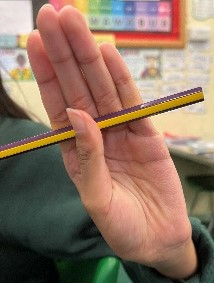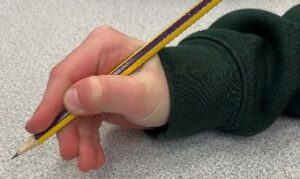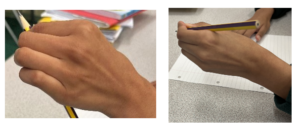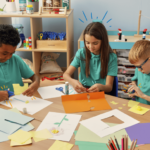Author: Lindsay Robinson
Lindsay Robinson has been a primary school teacher for 23 years and is passionate about achieving the very best outcomes for children through quality first teaching and experiences.
From my experience in classrooms from Reception to Year Six, it comes as no surprise to me that the latest research in Frontiers in Psychology* cites that writing by hand enhances brain function and is critical for learning. I have witnessed the joy of children of all ages producing their very best, neatest handwriting to be proud of that merits a big, gold sticker! Equally, I have seen many children really struggle with their writing stamina and even just getting their ideas down on paper because of difficulties with handwriting. By KS2 and beyond, this can certainly become a barrier to learning. I’ve also noticed the link between handwriting and memory, for example how muscle memory can help children recall spellings.
National Handwriting Day, celebrated annually on January 23rd, is a day dedicated to recognizing the importance of handwriting. In today’s world of technology, handwriting can often be overlooked or indeed, its importance questioned. However, recent research in Frontiers in Psychology* has proven that while typing certainly has a place and can make tasks easier, handwriting is vital to improving spelling, memory, letter recognition, and learning. Also, you can’t beat the personal triumph of a child producing something with their own hands. Concentration, care, pride and perseverance are qualities required to produce a great piece of handwriting; it can give children an immediate sense of self-esteem and motivation. The pen license ceremony has always been a much-anticipated and valued celebration in all my classes!
National Handwriting Day is the perfect opportunity to kick-start a real focus on the importance of handwriting in schools and to establish a balance between traditional and digital practices.
Celebrate handwriting in your class! Classmates Gold Star of the Week Stickers – 28mm – Pack of 54
Top Tips for Terrific Handwriting:
Fine Motor Warm-up
A few quick, fun exercises are a great warm-up for each handwriting session and will help all children develop their writing stamina but are particularly helpful for younger children and those who struggle with handwriting.
• Hand pushes in a prayer-like motion can strengthen the arms and shoulders.
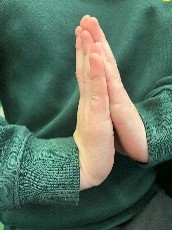
• Sideways figure eights (infinity loops) with each arm, and wrist circles help strengthen the wrists.
• Tapping each finger to the thumb helps to strengthen the fingers.
• Rolling a pencil from the fingertips to the palm helps to increase whole-hand flexibility.
Pencil grip is important
Teaching children to be comfortable with the dynamic tripod grip by Year 2 (although lots will be ready earlier) will help them develop a fluent and fast handwriting style. This is where only a thumb and two fingers are used to hold the writing tool. This helps the pencil to move accurately and efficiently; reducing the load on a child’s fine motor control.
If children are not holding the pencil correctly, it means more strain on the wrist, arm and even shoulder. The dynamic tripod grip means most of the control is in the thumb and the index finger so it’s worth the time spent to get this right, or to try to correct an incorrect grip.
• Teach the children to place the pencil on the table facing them.
• Pinch the pencil (with the thumb and index finger) around 2cm from the point of the pencil to pick it up. It’s worth spending time just practising the ‘pinching’ action.
• Flick the pencil back into the fleshy bit between the thumb and index finger. I tell the children that this is ‘putting the pencil to bed’
• Let the pencil rest on the middle finger. I tell the children that this is the pencil’s pillow.
Children who struggle with pencil grip will benefit from using a rubber grip on their pencil.
Ultra Grips Ellie Grip- Right-Handed Ellie Grip – Left-Handed
Triangular pencils are easier to grip and I always make sure that children use the correct grade of pencil for handwriting (H or HB).
Classmates Easy-grip Triangular Pencils STAEDTLER Jumbo Learner’s Pencil – Pack of 48
Posture
The correct posture is really important for fluent, neat handwriting. Building some simple acronyms into your everyday language with the children can help them develop good habits:
Move it – Sit Cushions
Primary Handwriting Line Guides
Line guides – that are appropriate to the age and ability of the child – are useful in handwriting sessions. Wider lines help younger children and those who may need more support. The lines can become closer together as the children become more proficient writers. The lines help the children develop a more uniform style by encouraging the main body of the letter to be between the two solid lines; the ascenders (tall letters) to reach the top solid line; and the descenders (letters with tails) to reach the bottom solid line. When asking the children to type, it’s worth considering the type of font that the children use and choosing one that is close to the written letter formations.
A4 Exercise Paper, Handwriting Guide
A Whole School Approach
There are many handwriting schemes on the market or a school may wish to develop its own. Whichever school handwriting scheme is used, a consistency of approach across the whole school is vital. Modelling quality handwriting for children is really important – I like to model on the same line guides as the children under the visualizer as well as using a flip chart with line guides. Most schemes will put letters into families and will guide you on how to build up handwriting joins from teaching the correct letter formation to letter joins. Each stage is really important as bad habits in letter formation formed earlier on are trickier to eradicate later.
Little and Often
Handwriting sessions don’t have to be long: ten to fifteen minutes – including the warm-up -3-4 times a week is enough. I like to make it a positive time with lots of quality teacher and child modelling. Always move around the room as the children practise their handwriting, praising great letter formation and super posture and don’t forget that all-important pen license ceremony!
Sources: *www.frontiersin.org: Handwriting but not typewriting leads to widespread brain connectivity: a high-density EEG study with implications for the classroom
Lindsay Robinson has been a primary school teacher for 23 years and is passionate about achieving the very best outcomes for children through quality first teaching and experiences. She strives to make her classroom a nurturing and caring environment. As an author for Hope Education, Lindsay enjoys drawing upon her own experiences in the classroom to support and encourage other teachers in their own classrooms.
All of the resources recommended can be found at hope-education.co.uk. Hope is rated Excellent on Trustpilot and offers Free Next Day Delivery. Hope has won many awards for the best service in the industry making Hope their customers’ Undisputed First Choice Education Resource Supplier. Part of the Findel family and home to EuHu – the Educator Hub created by teachers for teachers, Hope understands educators’ challenges and exists to make each day that little bit easier. For everything you could need each day, with value, service and quality you really want, Hope is all you need. *Full Terms and Conditions and latest prices and promotions are available online too. Primary School & Early Years Teaching Resources | Hope Education (hope-education.co.uk).
